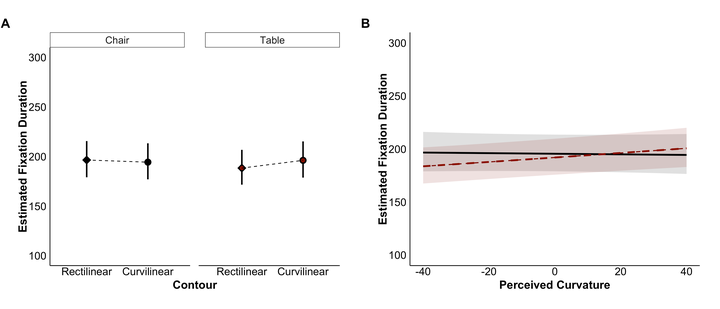
Abstract
Several studies have consistently demonstrated that people generally prefer curved over angular contours. However, the magnitude of the curvature effect varies across stimuli, for example, with a larger effect reported for abstract stimuli compared to interior spaces. A comparison across stimuli that share similar physical features and belong to the same categories is warranted to determine whether curvature is a determinant of object preference. Another important question is whether inspection differences, based on contour and object category, affect object preference. In Experiment 1, we addressed these questions by recording eye movements as participants rated their preferences for images of two types of common-use objects, tables and chairs. In Experiment 2, we limited the stimuli presentation to 84ms, as brief presentations are thought to enhance the curvature effect. Neither of the two experiments confirmed a clear preference for curvature in tables or chairs. However, curvature significantly influenced fixation durations, with curved tables eliciting longer fixations than angular ones, although without affecting overall preference. The findings are discussed in the context of familiarity and object usability in shaping preference judgements.